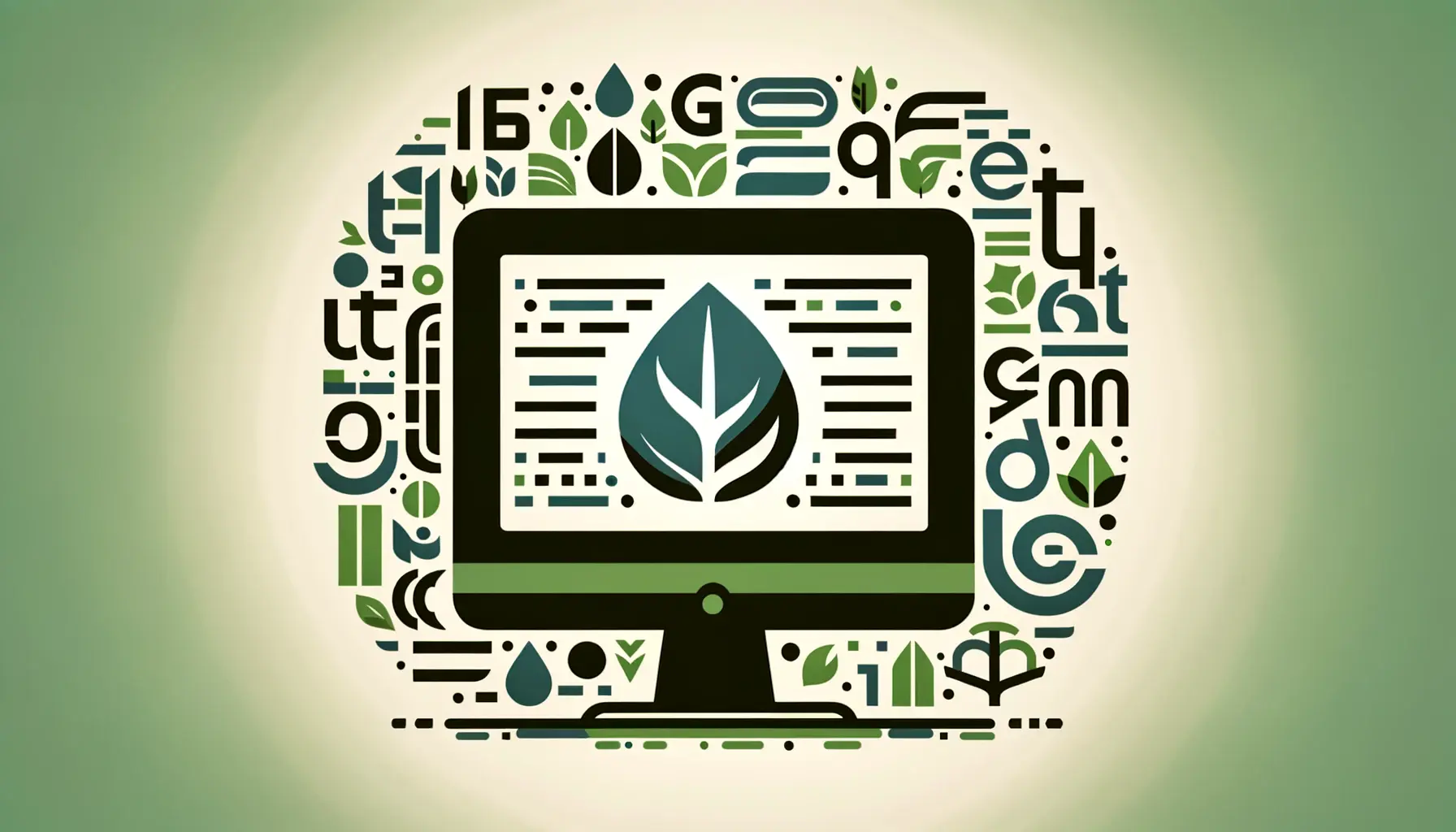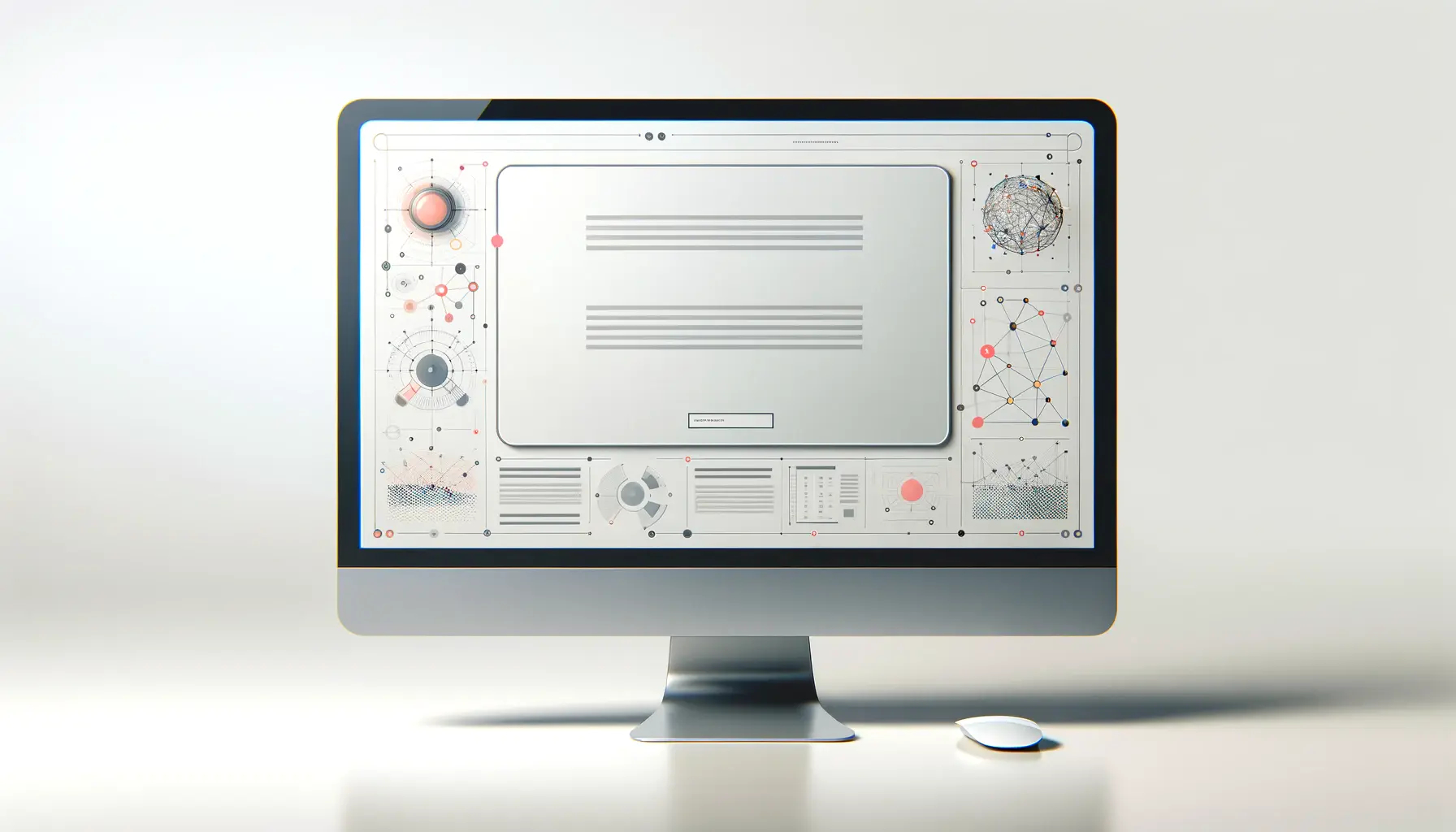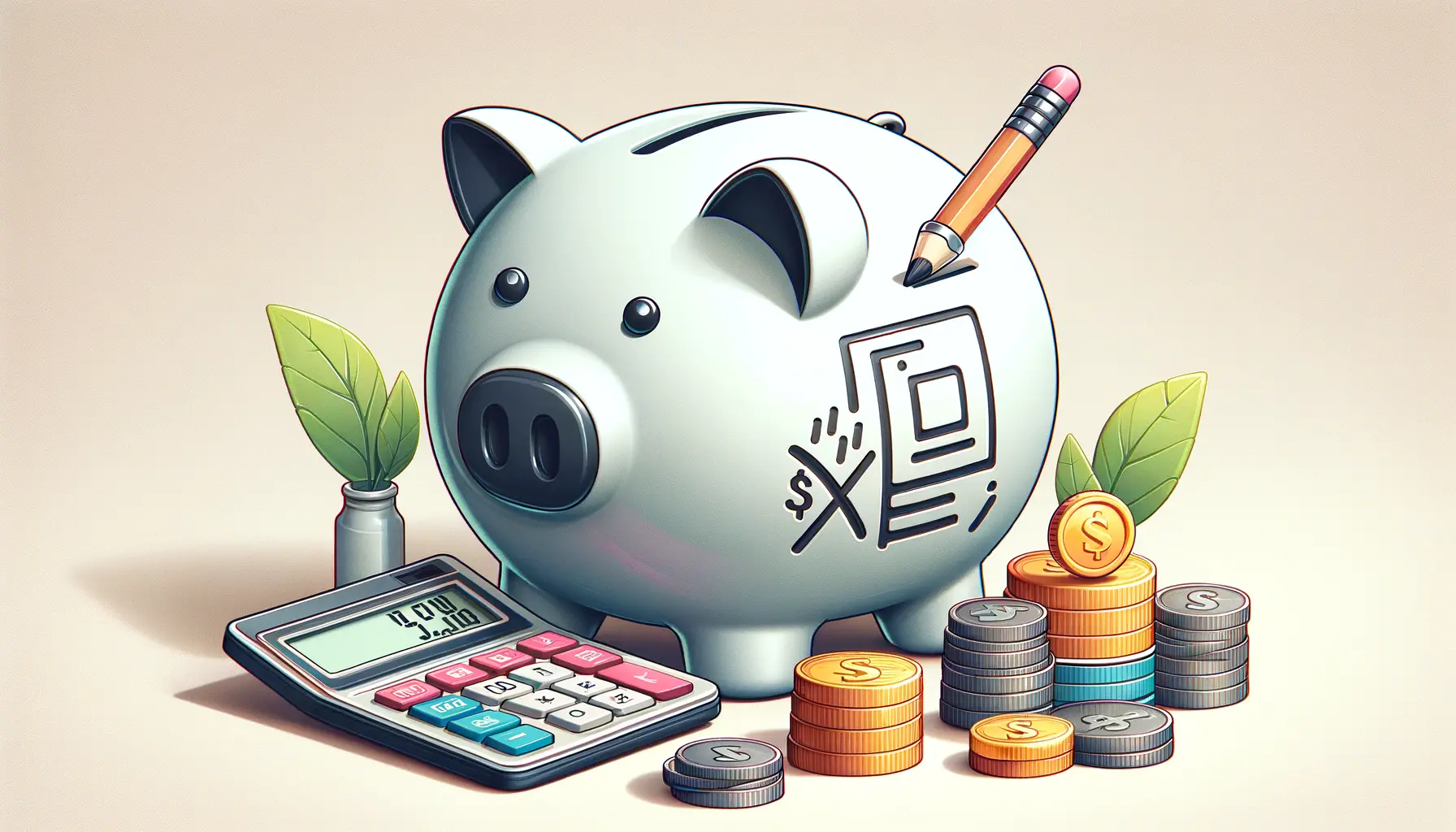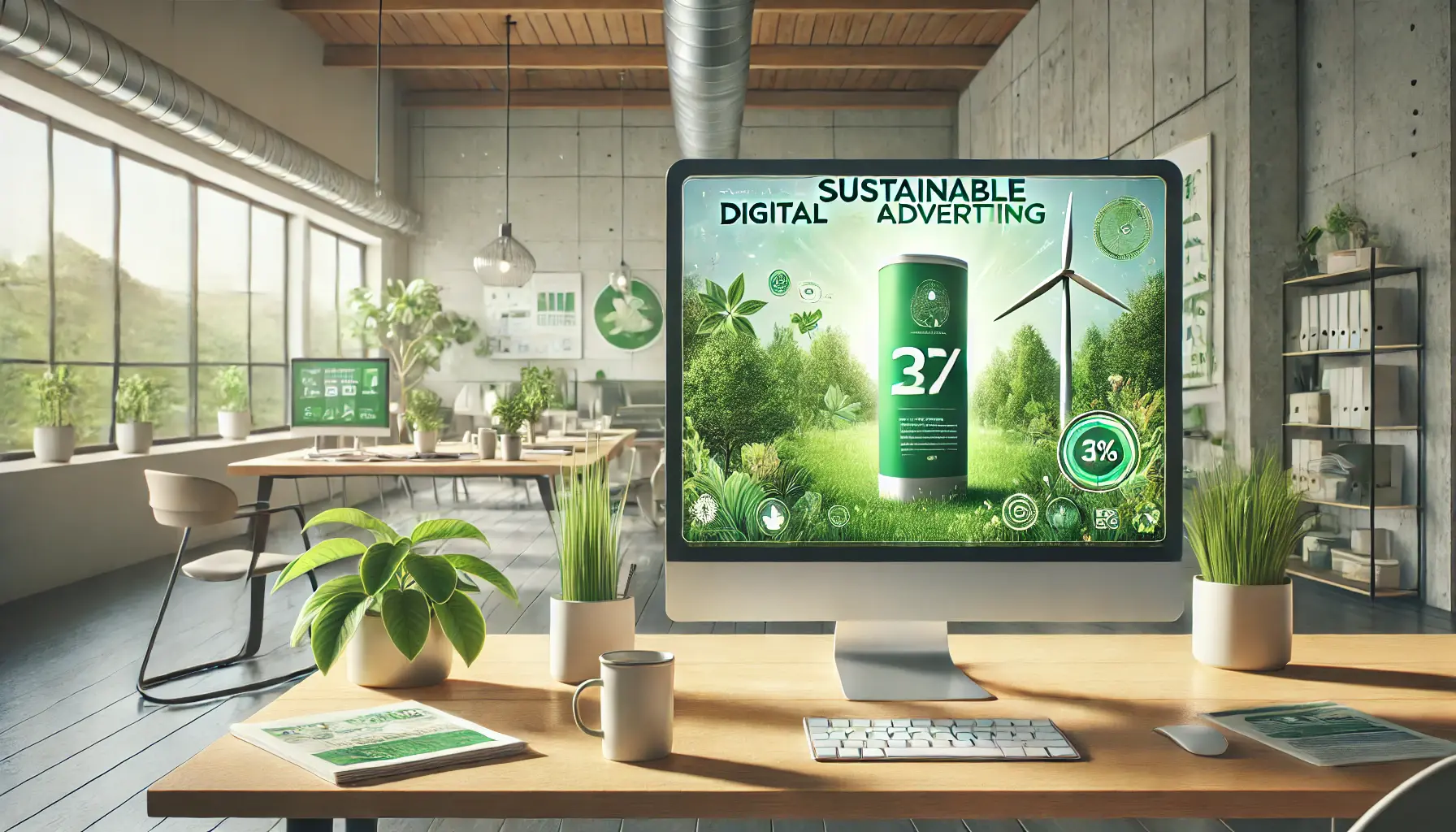Choosing the right font for your design project goes beyond aesthetics and readability.
In today’s environmentally conscious world, sustainability plays a crucial role in every decision we make, including the selection of fonts for our design projects.
Sustainable fonts are not just a trend; they represent a commitment to reducing our environmental footprint through mindful choices in our design practices.
This article delves into the significance of sustainable fonts and how they contribute to eco-friendly design, offering insights and practical tips for designers looking to make a positive impact.
The concept of sustainable fonts emerges from the broader movement towards sustainability in design.
It involves selecting typefaces that are designed with environmental considerations in mind, such as minimizing ink usage on print materials and reducing energy consumption for digital displays.
By understanding the characteristics and benefits of sustainable fonts, designers can make informed choices that align with eco-friendly principles without compromising on design quality or effectiveness.
- Understanding Sustainable Fonts
- Criteria for Selecting Sustainable Fonts
- Impact of Sustainable Fonts on Design and Environment
- Implementing Sustainable Fonts in Your Projects
- Challenges and Solutions in Sustainable Font Usage
- Future Trends in Sustainable Font Design
- Practical Tips for Designers Embracing Sustainable Fonts
- Embracing the Future with Sustainable Fonts
- Sustainable Fonts FAQ
Understanding Sustainable Fonts
Sustainable fonts are designed to minimize their environmental impact.
This can be achieved through various means, such as optimizing the font design to use less ink and paper or by ensuring that digital fonts are optimized for screen use to reduce energy consumption.
The choice of a sustainable font can significantly affect the carbon footprint of both printed materials and digital media.
One of the key considerations in choosing a sustainable font is its ink efficiency.
Fonts that require less ink not only save resources but also reduce the pollution associated with ink production and disposal.
Similarly, for digital designs, fonts that are legible at smaller sizes can reduce screen time and energy consumption, contributing to a lower environmental impact.
Ink Efficiency and Digital Optimization
Ink efficiency in fonts is primarily achieved through the design of the typeface itself.
Some fonts are specifically designed with thin strokes or open forms that require less ink to print.
These fonts, often referred to as eco-friendly or ink-saving fonts, can lead to significant reductions in ink usage over time, especially in large-scale printing operations.
For digital media, optimization involves creating fonts that are easily readable on screens at smaller sizes, which can reduce energy consumption by allowing users to lower their screen brightness or reduce the time spent on reading.
Additionally, well-optimized web fonts can decrease loading times and data usage, further enhancing the sustainability of digital designs.
Choosing a sustainable font is a simple yet effective way to contribute to environmental sustainability in design projects.
Criteria for Selecting Sustainable Fonts
Selecting the right sustainable font for your project involves more than just looking for the greenest option.
It requires a balance between design aesthetics, readability, and environmental impact.
Here are the key criteria to consider when choosing sustainable fonts for your design projects:
Eco-Friendly Design Characteristics
Fonts with eco-friendly design characteristics are specifically created to minimize environmental impact.
These characteristics include:
- Thin strokes: Fonts with thinner strokes use less ink when printed, making them more eco-friendly.
- Open forms: Open, airy fonts require less ink and can also be more legible, reducing the need for larger print sizes.
- Efficiency in digital displays: Fonts that are easy to read on screens can reduce energy consumption by allowing for lower brightness settings.
Print and Digital Optimization
Optimization for both print and digital mediums is crucial for a font to be considered sustainable.
This includes:
- Ink-saving potential: The ability of a font to save ink without sacrificing legibility is a key factor in its sustainability.
- Screen legibility: Fonts that remain legible at smaller sizes on digital screens contribute to energy efficiency.
- Load times: For web use, fonts that are optimized to load quickly reduce energy consumption and improve user experience.
Compatibility and Versatility
A sustainable font should not only be eco-friendly but also versatile and compatible across different mediums and devices.
This ensures that the font can be used widely, maximizing its sustainability benefits.
Consider:
- Wide range of weights and styles: A good sustainable font offers a variety of weights and styles to ensure flexibility in design without needing to switch fonts.
- Cross-platform compatibility: The font should display consistently across different operating systems and devices to ensure a uniform user experience.
Incorporating sustainable fonts into your design projects reflects a commitment to environmental responsibility and can significantly reduce the ecological footprint of your work.
Impact of Sustainable Fonts on Design and Environment
The adoption of sustainable fonts has a dual impact: it enhances the eco-friendliness of design projects while also contributing positively to the environment.
Understanding these impacts can motivate designers to prioritize sustainability in their font choices.
Reducing Resource Consumption
Sustainable fonts play a significant role in reducing resource consumption in both print and digital formats.
By requiring less ink and paper for printed materials and consuming less energy for digital displays, these fonts help conserve valuable environmental resources.
This reduction in resource consumption directly translates to a decrease in waste and pollution, contributing to a healthier planet.
In the context of print design, the choice of a sustainable font can lead to substantial savings in ink over time, especially for large-scale printing operations.
For digital designs, fonts optimized for screen use can lower energy consumption by reducing the need for high screen brightness and decreasing loading times.
Enhancing Design Sustainability
Integrating sustainable fonts into design projects not only benefits the environment but also enhances the sustainability of the design itself.
Sustainable design is about creating work that is not only aesthetically pleasing and functional but also environmentally responsible.
By choosing sustainable fonts, designers can ensure that their projects align with broader sustainability goals, making a positive impact on the environment without compromising on quality or creativity.
Furthermore, sustainable fonts can contribute to a brand’s image as environmentally conscious.
Consumers are increasingly looking for brands that demonstrate a commitment to sustainability, and the use of eco-friendly fonts can be a part of this branding strategy.
This alignment with consumer values can enhance brand loyalty and attract a more environmentally aware audience.
The impact of sustainable fonts extends beyond their immediate environmental benefits, influencing the broader field of design towards more responsible practices and helping brands connect with eco-conscious consumers.
Implementing Sustainable Fonts in Your Projects
Integrating sustainable fonts into your design projects requires a strategic approach that balances environmental considerations with design objectives.
Here’s how you can effectively implement sustainable fonts in your projects:
Identifying Suitable Sustainable Fonts
Start by identifying fonts that are known for their sustainability features.
Look for fonts with thin strokes, open forms, and those optimized for screen use.
Resources like Google Fonts and Adobe Fonts offer collections of eco-friendly fonts that can be filtered based on these characteristics.
Optimization Techniques for Digital Use
For digital projects, optimizing font loading and rendering is crucial for sustainability.
Consider the following techniques:
- Use font-display: Implement the CSS font-display property to control how fonts are loaded and minimize invisible text during loading.
- Limit font weights and styles: Only include the font weights and styles that are absolutely necessary for your project to reduce file sizes.
- Subset fonts: Create subsets of your fonts to include only the characters you need, significantly reducing file sizes.
Best Practices for Print Projects
When designing for print, sustainable font selection can lead to significant ink and paper savings.
Keep these best practices in mind:
- Choose ink-efficient fonts: Select fonts that are designed to use less ink, such as those with thinner lines and more open letterforms.
- Adjust font size and spacing: Optimize font size and letter spacing to use less ink without compromising readability.
- Consider the paper type: Pair your sustainable font choice with recycled or sustainably sourced paper for maximum environmental benefit.
Evaluating the Environmental Impact
After implementing sustainable fonts, evaluate the environmental impact of your choices.
Tools and calculators are available online to estimate savings in terms of ink, paper, and energy consumption.
This evaluation can help you understand the effectiveness of your sustainability efforts and identify areas for further improvement.
Implementing sustainable fonts is a practical step towards eco-friendly design, offering a straightforward way to reduce the environmental impact of your projects while maintaining high design standards.
Challenges and Solutions in Sustainable Font Usage
While the benefits of using sustainable fonts are clear, designers often face challenges in their implementation.
Understanding these challenges and knowing how to address them can facilitate smoother adoption of eco-friendly fonts in various projects.
Compatibility and Accessibility Issues
One common challenge is ensuring that sustainable fonts are compatible across different platforms and devices.
Additionally, maintaining accessibility standards is crucial, as some eco-friendly fonts may compromise legibility if not chosen carefully.
- Solution: Test fonts across multiple devices and browsers to ensure consistent performance. Also, prioritize fonts that are designed with accessibility in mind, balancing sustainability with readability.
Brand Identity Concerns
Another concern is that sustainable fonts might not align with a brand’s established identity or aesthetic.
This can be particularly challenging for brands with strong visual identities that rely heavily on specific typefaces.
- Solution: Look for sustainable fonts that offer a range of weights and styles to closely match the brand’s existing typography. Consider custom font creation as a solution to meet both sustainability and brand identity goals.
Limited Selection and Creativity Constraints
Designers may also worry about the perceived limited selection of sustainable fonts, fearing it might constrain their creativity.
The concern is that prioritizing sustainability could lead to repetitive and uninspired designs.
- Solution: Explore the growing library of sustainable fonts, which is expanding as more designers and foundries embrace eco-friendly principles. Use this as an opportunity to innovate and push the boundaries of sustainable design.
Overcoming Resistance to Change
Finally, there can be resistance to change within organizations or from clients who are accustomed to traditional fonts and design practices.
- Solution: Educate stakeholders about the benefits of sustainable fonts, not just for the environment but also for brand perception and potential cost savings. Present case studies and examples of successful implementations to build a compelling case for change.
Despite these challenges, the shift towards sustainable fonts is a crucial step in the evolution of design practices. By addressing these challenges head-on, designers can lead the way in creating visually appealing, environmentally responsible projects.
Future Trends in Sustainable Font Design
The world of typography is continuously evolving, with sustainable font design emerging as a significant trend.
As awareness of environmental issues grows, the demand for eco-friendly design solutions, including sustainable fonts, is set to increase.
This section explores the future trends in sustainable font design and their potential impact on the design industry.
Innovation in Font Design
As designers and typographers become more environmentally conscious, we can expect to see innovations in font design that prioritize sustainability without compromising on style or functionality.
This includes the development of fonts that use less ink and energy, as well as advancements in digital font rendering technologies to reduce the environmental impact of online content.
- Advancements in ink-saving technologies: New font designs that further minimize ink usage while maintaining legibility and aesthetic appeal.
- Improved digital optimization: Enhanced techniques for optimizing fonts for digital displays, reducing energy consumption and improving loading times.
Integration with Sustainable Design Practices
Sustainable fonts will become an integral part of broader sustainable design practices.
Designers will increasingly consider the environmental impact of their font choices as part of their overall design strategy, integrating sustainable fonts with other eco-friendly design elements to create projects that are both beautiful and environmentally responsible.
- Comprehensive sustainability assessments: Tools and methodologies for evaluating the environmental impact of design projects, including font choices, will become more sophisticated and widely used.
- Collaboration across disciplines: Greater collaboration between typographers, designers, environmental experts, and brands to create innovative solutions that meet sustainability goals.
Increased Demand for Eco-friendly Fonts
Consumer and client demand for sustainable products and services is driving the demand for eco-friendly fonts.
As more people become aware of the environmental impact of their choices, including the digital content they consume, brands and designers will prioritize sustainable font options to meet this demand.
- Growth in eco-conscious branding: Brands will increasingly adopt sustainable fonts as part of their eco-friendly branding strategies to appeal to environmentally conscious consumers.
- Expansion of sustainable font libraries: The availability of sustainable fonts will continue to grow, offering designers a wider range of options to choose from for their projects.
The future of sustainable font design is bright, with innovations and trends pointing towards a more environmentally conscious approach to typography. By embracing these trends, designers can contribute to a more sustainable future while continuing to create compelling and effective designs.
Practical Tips for Designers Embracing Sustainable Fonts
As the design community moves towards more sustainable practices, incorporating eco-friendly fonts into projects is becoming a priority for many designers.
Here are practical tips for designers looking to embrace sustainable fonts and contribute to a more environmentally responsible design industry.
Start with a Sustainability Mindset
Adopting a sustainability mindset is the first step towards making more eco-friendly design choices.
Consider the environmental impact of your projects from the outset and make sustainability a key factor in your design decisions, including font selection.
- Research sustainable design principles and apply them to your work.
- Stay informed about new developments in sustainable font design and technology.
Educate Clients and Stakeholders
Part of embracing sustainable fonts involves educating clients and stakeholders about their benefits.
Many clients may not be aware of the environmental impact of their design choices, including font selection.
- Present the environmental and economic benefits of using sustainable fonts.
- Include sustainability as a key component of your design proposals and presentations.
Experiment and Innovate
Don’t be afraid to experiment with sustainable fonts and explore new ways to incorporate them into your designs.
Innovation is key to advancing sustainable design practices.
- Experiment with different sustainable fonts to find the best fit for your projects.
- Consider custom font designs that meet both your aesthetic and environmental goals.
Share Your Experiences
Sharing your experiences with sustainable fonts can inspire others in the design community to adopt more eco-friendly practices.
Write blog posts, participate in design forums, or give talks about your journey towards sustainability in design.
- Share case studies and examples of successful projects that used sustainable fonts.
- Contribute to discussions about sustainability in design communities and social media.
Advocate for Broader Change
Finally, advocate for broader change within the design industry towards more sustainable practices.
This can involve supporting initiatives that promote sustainability, participating in industry discussions about environmental responsibility, and encouraging font designers and foundries to create more eco-friendly options.
- Support and promote initiatives that aim to reduce the environmental impact of design.
- Encourage font designers and foundries to prioritize sustainability in their work.
Remember, embracing sustainable fonts is just one aspect of sustainable design, but it’s an important step that can have a significant impact. By incorporating eco-friendly fonts into your projects, you contribute to a more sustainable and responsible design industry.
Embracing the Future with Sustainable Fonts
The journey towards sustainability in design is both a challenge and an opportunity for creatives worldwide.
As we delve deeper into the implications of our choices, it becomes clear that even the smallest decisions, such as selecting a font, can have profound environmental impacts.
Sustainable fonts emerge not just as a trend but as a necessity, pushing the boundaries of design towards a more eco-conscious future.
This article has explored the multifaceted role of sustainable fonts in eco-friendly design, offering insights and practical advice for integrating these fonts into various projects.
The Path to Sustainability
Choosing sustainable fonts is a step towards reducing the environmental footprint of our design projects.
By prioritizing fonts that are designed with eco-friendly principles in mind, designers can contribute to conservation efforts while still achieving high-quality aesthetic results.
The criteria for selecting sustainable fonts, including ink efficiency and digital optimization, serve as a guide for making informed decisions that align with environmental goals.
Overcoming Challenges
While the shift towards sustainable font usage presents certain challenges, such as compatibility issues and potential constraints on creativity, the solutions outlined in this article demonstrate that these obstacles can be overcome.
By educating clients about the benefits of sustainable fonts, experimenting with innovative design approaches, and advocating for broader industry change, designers can pave the way for a more sustainable future in typography.
Looking Ahead
The future trends in sustainable font design promise exciting developments in the field.
With ongoing innovation in font design and increasing integration with sustainable design practices, the potential for eco-friendly fonts is boundless.
As demand for sustainable design solutions grows, the design community must continue to explore and embrace new ways to incorporate sustainability into their work.
Final Thoughts
In conclusion, the adoption of sustainable fonts is more than a professional or aesthetic choice; it’s a commitment to environmental stewardship and a reflection of a designer’s values.
As we move forward, the collective efforts of the design community in embracing sustainable fonts will undoubtedly contribute to a more sustainable and responsible approach to design.
Let us continue to innovate, educate, and advocate for sustainable design practices, with the choice of fonts being a pivotal part of our journey towards a greener future.
Quality web design is key for a great website! Check out our service page to partner with an expert web design agency.
Sustainable Fonts FAQ
Explore frequently asked questions about sustainable fonts and their role in eco-friendly design.
Sustainable fonts are designed to minimize environmental impact by using less ink for printing and being optimized for digital displays to reduce energy consumption.
Yes, fonts that require less ink and are optimized for screen use can significantly reduce environmental impact by saving resources and energy.
Look for fonts with thin strokes, open forms, and those optimized for screen use. Consider the font’s ink efficiency and digital legibility.
No, sustainable fonts are beneficial for both print and digital projects. They save ink on printed materials and reduce energy consumption on digital platforms.
Yes, many sustainable fonts offer a range of styles and weights, allowing for creative and versatile design options without compromising sustainability.
Not necessarily. Many sustainable fonts are available for free or at the same cost as traditional fonts. The key is their design and usage efficiency.
Incorporate sustainable fonts, use eco-friendly materials, optimize digital content for energy efficiency, and consider the environmental impact of your design choices.
Sustainable fonts can be found on platforms like Google Fonts and Adobe Fonts, which offer filters to help identify eco-friendly options.












